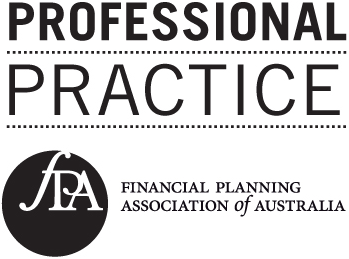Going solo
It is well-known that self-managed super is most popular among couples, but 23% are single-member funds. Speak to your planner today about your SMSF options.
In fact, 70 per cent of SMSFs as at June 2014 had two members - with the vast majority being in a marital relationship.

It is not as widely recognised that almost a quarter of SMSFs are single-member funds - 23 per cent to be exact, according to the tax office's statistical report for 2013-14.
Although the SMSFs are permitted to have up to four members - providing an opportunity for, say, adult children to join their ageing parents' SMSF - a relatively small percentage of funds take this course.
ATO statistics show that three and four-member SMSFs each make up four per cent of self-managed funds.
Of course, many investors intentionally setup a single-member SMSF. And many two-member SMSFs may become single-member funds following the death of a member or perhaps with the splitting of super savings following a marital breakdown.
Particularly given that more than 130,000 individuals are the sole members of their SMSFs, it is worth looking at how superannuation law applies to single-member funds.
Under the Superannuation Industry (Supervision) Act, a single-member SMSF must have a corporate trustee (with up to two directors) or two individual trustees. And the sole member must be either a director of the corporate trustee or one of the two individual trustees.
No doubt as part of their estate planning, numerous members of two-person SMSFs are considering what to do with their super funds should one member predecease the other. Should the fund continue as a single-member SMSF? Much will obviously depend on personal circumstances including perhaps any relevant professional advice received and the level of interest that the surviving member has in self-managed super.
As editor Stuart Jones writes in the Thomson Reuters Australian Superannuation Handbook 2015-16, a former two-person SMSF does not immediately become a single-member SMSF upon the death of a member. Such a fund is given six months to meet the requirements for being an SMSF by appointing a corporate trustee or appointing a second individual trustee.
Discussions about single-member trustees and their trustee requirements may encourage you to think further about what is the most-appropriate trustee arrangement for your SMSF - individual trustees or a corporate trustee. See An SMSF trustee decision for the long, long haul, Smart Investing, September 3, 2015.
By Robin Bowerman
Smart Investing
Principal & Head of Retail, Vanguard Investments Australia
20 March 2016
Latest eNewsletters
Hot Issues
- AI exuberance: Economic upside, stock market downside
- Becoming a member of an SMSF is easy, but there are other things that need to be considered
- Investment and economic outlook, November 2025
- Move assets before death to avoid tax implications
- ATO issues warning about super schemes
- 12 financial tips for the festive season and year ahead
- Birth date impacts bring-forward NCCs
- Countries with the largest collection or eucalyptus trees
- How to budget using the envelope method
- Accountants united in support for changes
- Investment and economic outlook, October 2025
- Stress-test SMSF in preparation for Div 296
- Determining what is an in-house asset can help determine investment strategy
- Beware pushy sales tactics targeting your super
- Call for SMSF ‘nudge’ in DBFO package
- How Many Countries Divided From The Largest Empire throughout history
- How changes to deeming rates could affect your pension payments
- Five building blocks that could lead to a more confident retirement
- Investment and economic outlook, September 2025
- Caution needed if moving assets to children
- Evolution of ‘ageless workers’ sees retirement age rise
- Younger Australians expect more for their retirement
- New NALE guidance still has issues
- Airplane Fuel Consumption Per Minute


